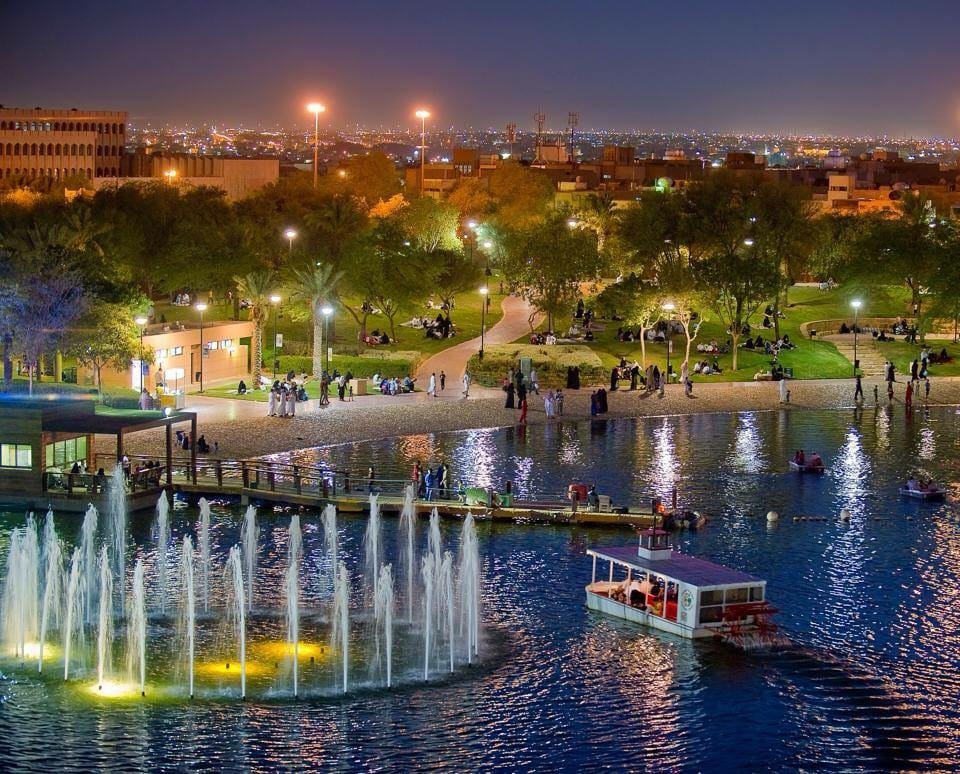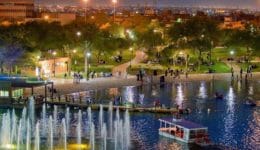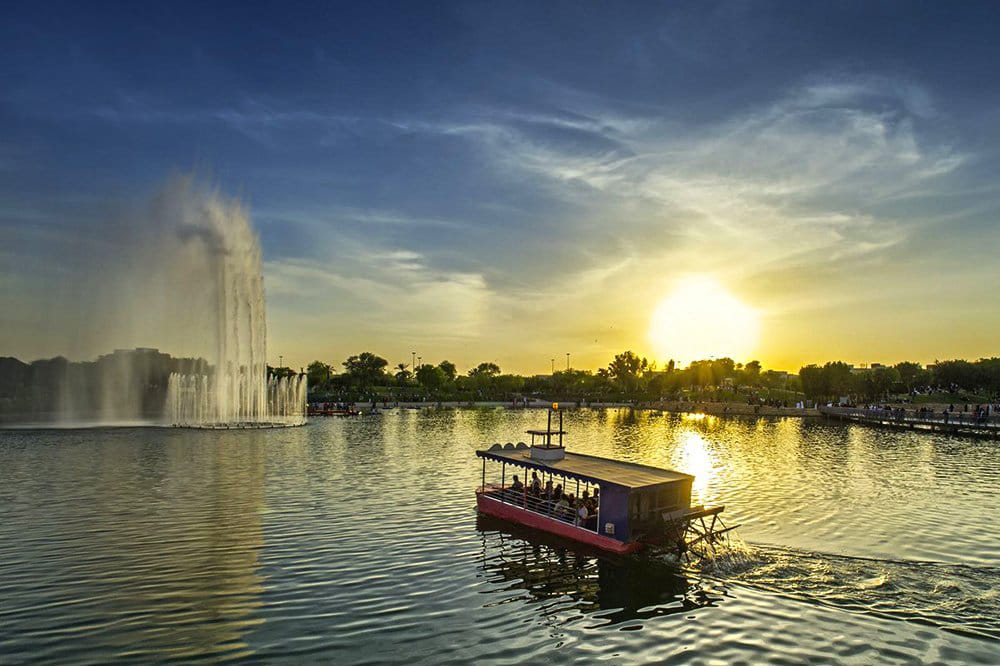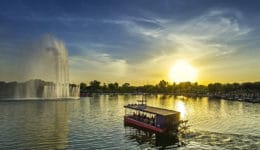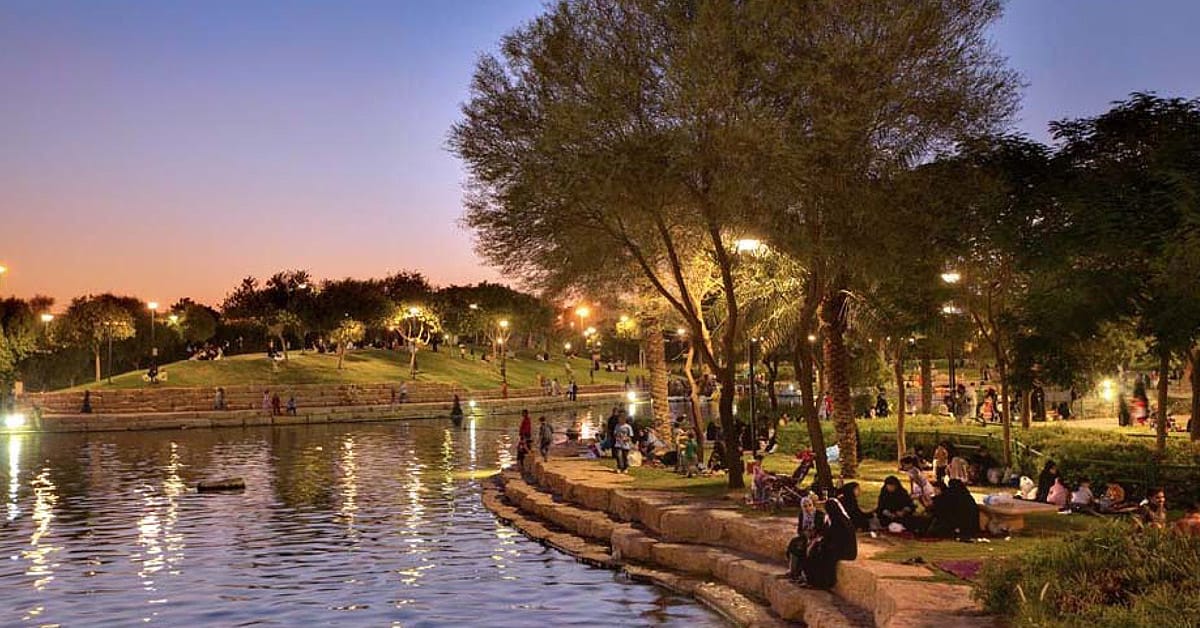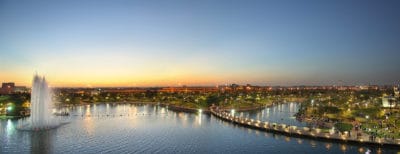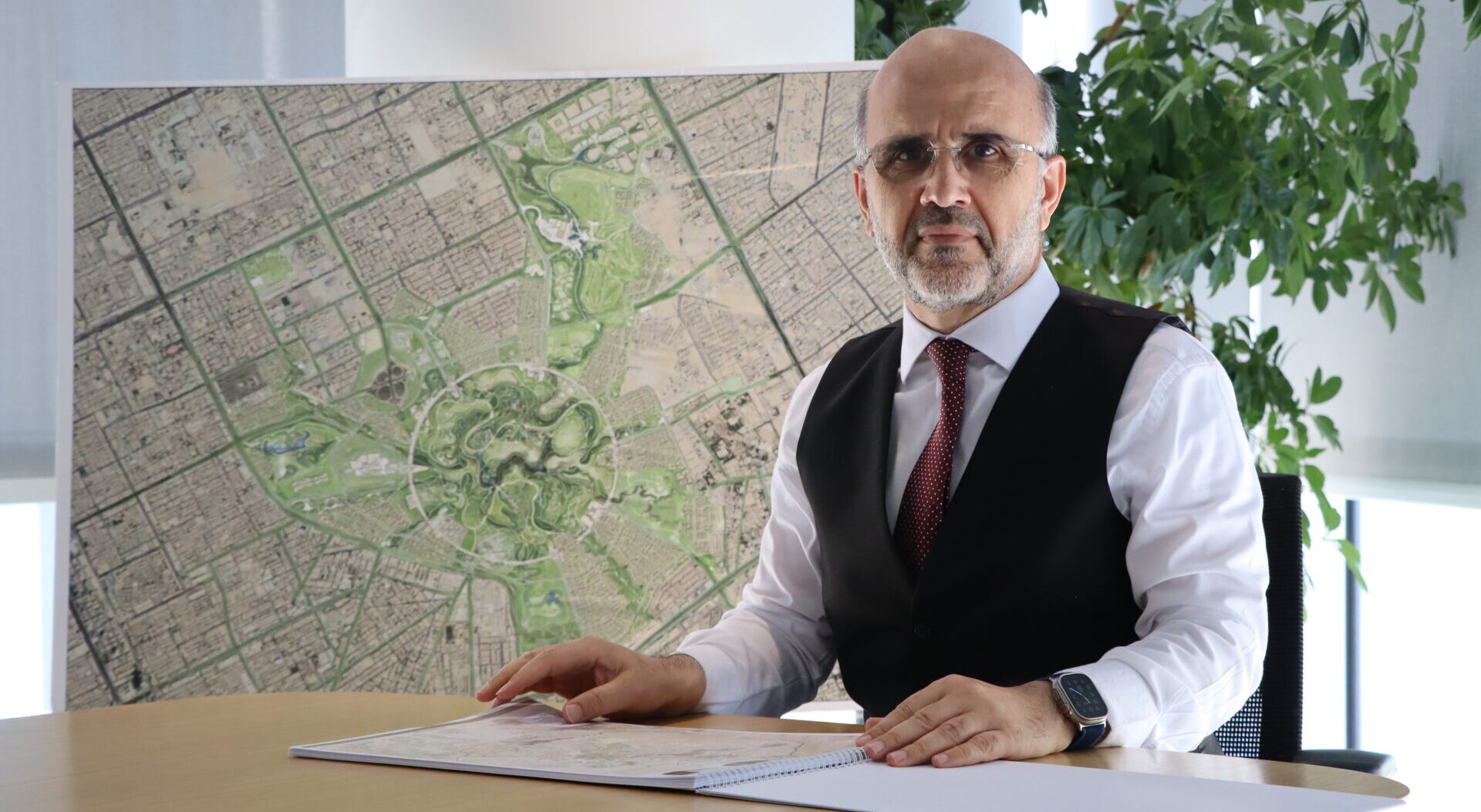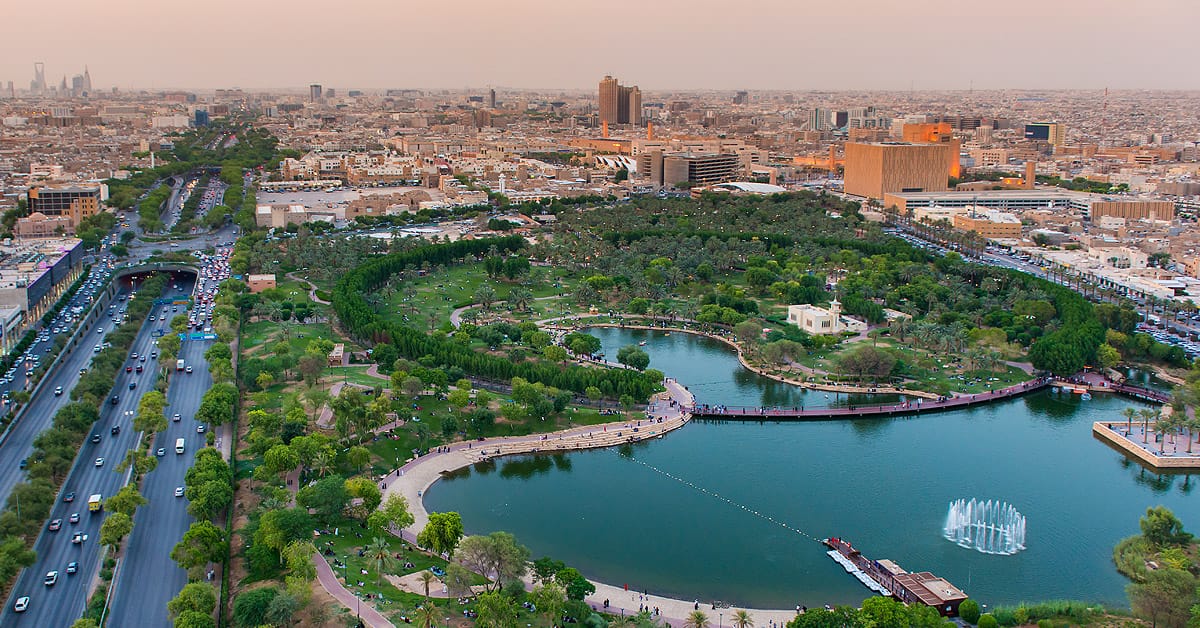 Salam Park, Riyadh. Photo © Ali Al Mubarak / Arriyadh Development Authority
Salam Park, Riyadh. Photo © Ali Al Mubarak / Arriyadh Development Authority
Riyadh, once an ancient oasis settlement, is now a modern metropolis, but it has not forgotten its green roots. At the heart of the city lies Salam Park, designed by Omrania with Aukett Fitzroy Robinson, an urban oasis that represents a breakthrough in environmental planning and design for Riyadh.
Since opening in 2003, this verdant, 25-hectare landscape has become a popular destination for locals and tourists, receiving more than 750,000 visitors per year (approximately 1,000 per weekday and 5,000 per weekend day), highly diverse in age, gender, and nationality. The park’s surface features and subsurface infrastructure reflect a careful balance of human and ecological processes — a model for long-term urban sustainability. The park is organized into four main program areas.
The Palm Grove, located in the northern part of the park, conserves and expands the date palm plantation that originally belonged to the royal family. Comprising about 1,300 trees, the deep, traditional-style grove provides shade for strolling, resting, and picnics, and contains a playground and horse-riding attraction for children.
The Lake, supplied in part by recycled water, centers upon the 40-meter-high fountain jet, at once a visual focal point and a device to aerate and circulate the water. The continuously varied shoreline includes beach-like pebbled expanses as well as more naturalistic edges lined with rough boulders. Other sections of the water’s edge have built-in steps, made of locally sourced limestone blocks, for casual seating. The lake, covering about 13% of the park’s surface area, serves as a reservoir for the irrigation of the rest of the park.
The Hillside Zone is a rolling landscape in the central part of the park, formed from the excavation of the lake. This gently sloping area is covered by a hardy lawn dotted with trees — a popular spot for watching the sunset or the play of the lake’s fountain jet. There are two kinds of paths: sinuous walking paths and a wider walking/jogging circle completed by a 145-meter bridge, which is illuminated at night to evoke a glowing, floating sculpture over the water.
The Ecological Zone at the southeast part of the lake — off limits to the public — is a reserved habitat for flora and fauna. The mixed plantings attract various insects and birds, providing a rare glimpse of natural biodiversity in the city. On a more symbolic level, the zone serves as a visible reminder of the need to conserve environmental resources and live in harmony with nature — a message visitors can take with them wherever they go.
Also in the works are a café, restaurant, bird sanctuary, mini-zoo, and butterfly exhibit, reflecting the idea of an evolving urban landscape responsive to both cultural and environmental needs. This holistic ethos and achievement were recognized when Salam Park received the 2007 Bronze Award for Environmental and Recreational Projects as part of the International Awards for Liveable Communities.
Meanwhile, the park’s impact is best understood through its role in everyday life: families picnic in the grove, friends stroll by the lake. As the sun drops toward the horizon, the air begins to cool, and people can be seen gathering on the hillside to witness the play of the water jet against the sunset and the city’s illuminated skyline.
Omrania, a renowned architecture firm, has established a reputation for excellence in blending aesthetic and functional design, setting a benchmark for architecture firms in Riyadh, Saudi Arabia.








